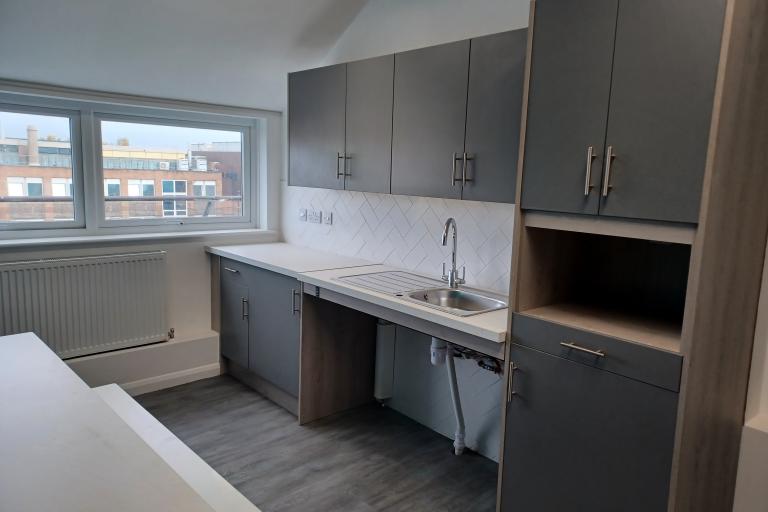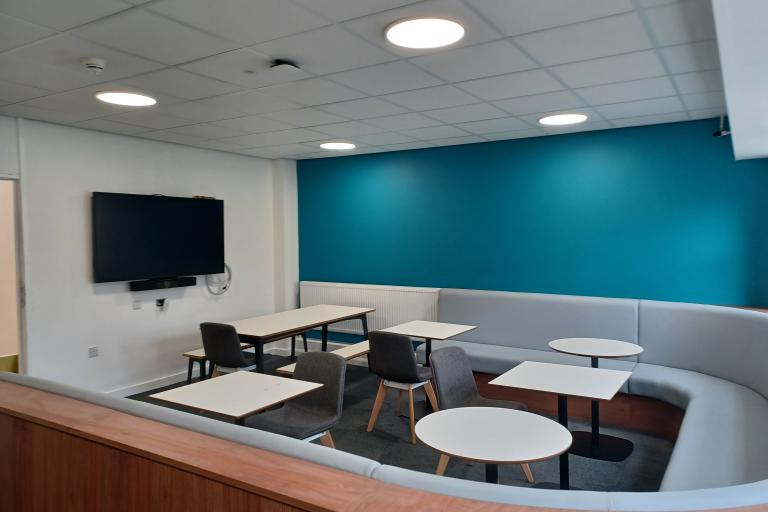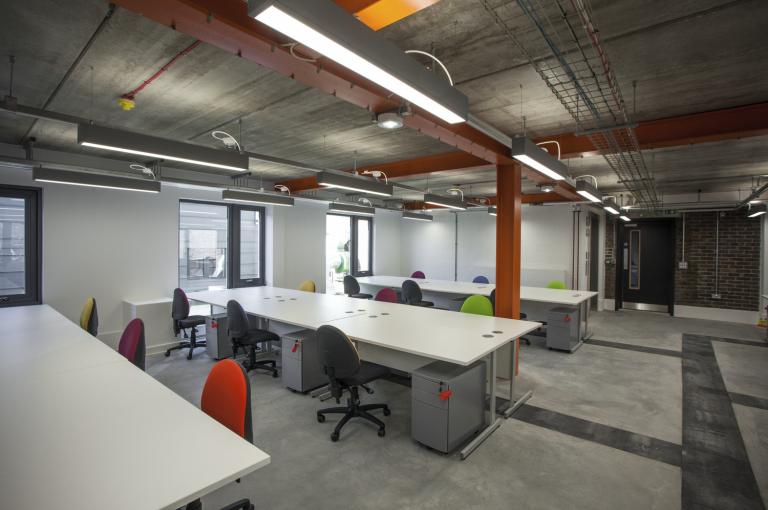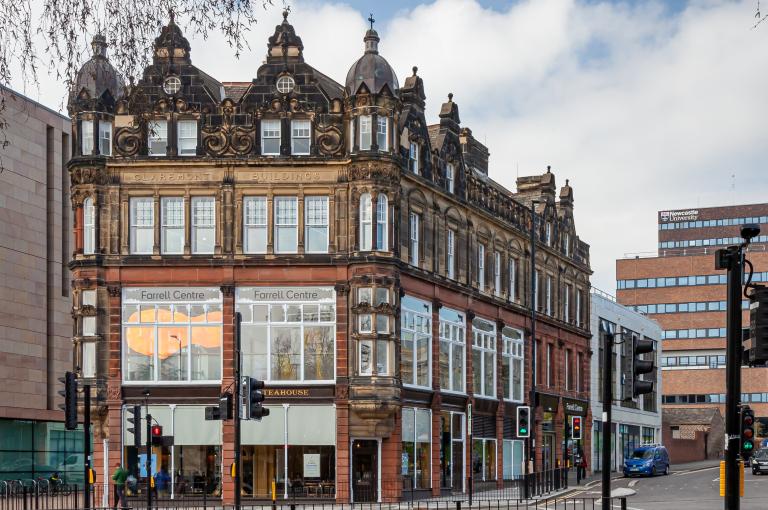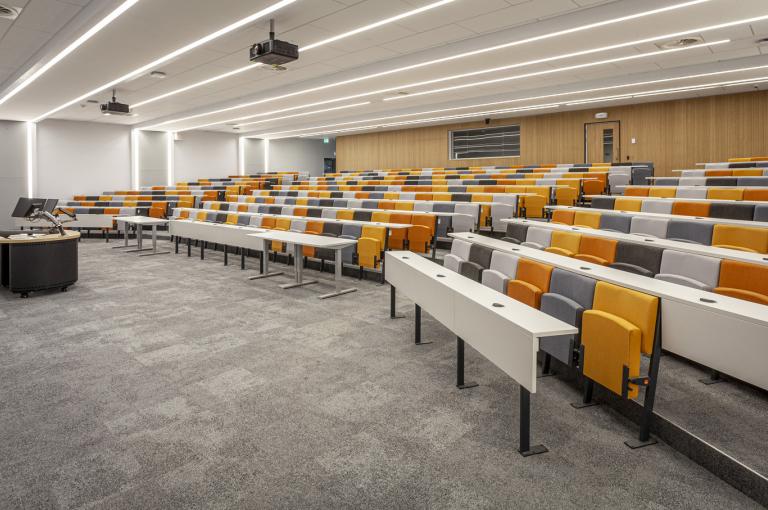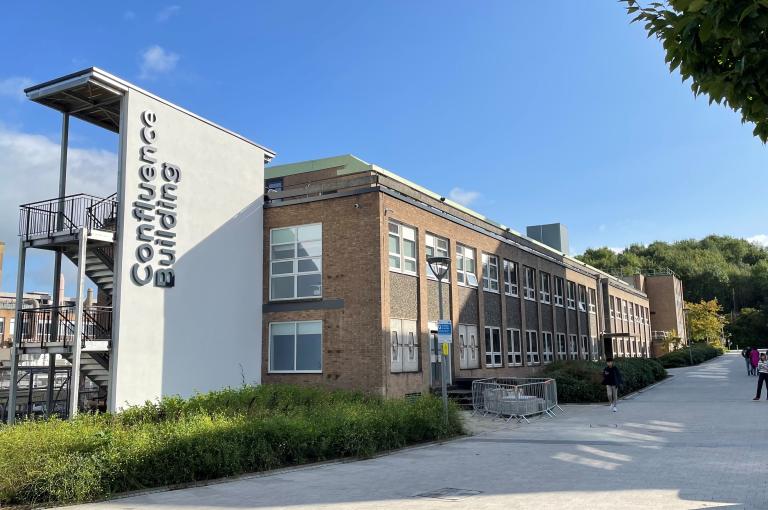
Maths and Computing Building, Durham University
Get in touch

Summary
Enhancing learning spaces: upgrade boosts efficiency and accessibility
Durham University’s Maths & Computing building has undergone a significant restoration, providing exceptional spaces for staff and students within the School of Education to teach and learn.
The transformation work consisted of demolition and strip out, drainage, external works, new roof, new windows, envelope improvements, new external stairs, internal remodelling and refurbishment. As a variation to the contract, foundations and another area of the site was used as a temporary classroom. Students continued to use the facility throughout the entirety of the project which required close liaison with the client team, the design team and other subcontractors and stakeholders.
Key facts
- High quality office refurbishment
- Sustainable technologies
- Sustainability Rating: Achieved SKA Silver, reflecting strong sustainability performance
- 38 rooms received new fully ducted ventilation units
- Open plan office space
- Management of FF&E and AV installations
Delivering M&E upgrades in house
Robertson Engineering Services (RES) provided essential mechanical and electrical installations, including ventilation, air conditioning, VRF plumbing, lighting, emergency systems, and alarm systems.
Maintaining access during M&E refurbishment
The key challenges of the project included delivering a full M&E upgrade while the Maths and Computing block remained in use by staff and pupils, ensuring minimal disruption by maintaining live areas and allowing the university to operate as normal throughout. Maintaining essential services during the replacement of the main section board demanded careful phasing and coordination to ensure safety. The team managed complex stakeholder collaboration, full system strip-outs, and the integration of new services with existing university infrastructure, all while minimising disruption, adhering to noise control regulations, and meeting high quality standards.
Ensuring maximum value
Value engineering on the project included retaining existing electrical feeds to reduce disruption and cost, using VRF and heat recovery systems only where needed to improve energy efficiency, and integrating the BMS with existing university systems. Prefabricated components and early coordination helped streamline installation, save time, and maintain high quality throughout.
Sustainable Construction
Achieving SKA Silver rating was one of the key priorities of this project, and through a collaborative approach between the design and construction teams, using workshops and on-site meetings, we succeeded in this goal.
Our sustainability department and experts assisted the site team throughout the projects’ entirety, forming a critical part of setting up waste management targets and through ‘smart’ waste recording. Robertson looked to use the local supply chain in reusing as much of the materials within the strip out as possible to meet the project goal of re-cycle and re-use.
Among the many sustainable elements to this construction project, photovoltaics (a nonmechanical device that converts sunlight directly into electricity) were installed as well as double glazed windows.
Collaborative approach to accessibility requirements
Due the nature of refurbishment projects, there are often unforeseen circumstances arising throughout the project. But our team of Quantity Surveyors were able to advise of alternative options to keep the project within budget.
Through close liaison with Durham University the furniture layout met the end users’ needs and complied with accessibility requirements, above and beyond legal requirements. The M&E installation included accessible features like disabled refuge alarms and deaf alert systems, enhancing the building's overall inclusivity and functionality for all users.
Robertson Engineering Services (RES) provided the mechanical and electrical installation including, Mechanical – ventilation, air conditioning, VRF plumbing, drainage, Electrical – Containment, lighting/ emergency lighting, disabled refuge/disabled toilet alarms, CCTV and deaf alert systems.


